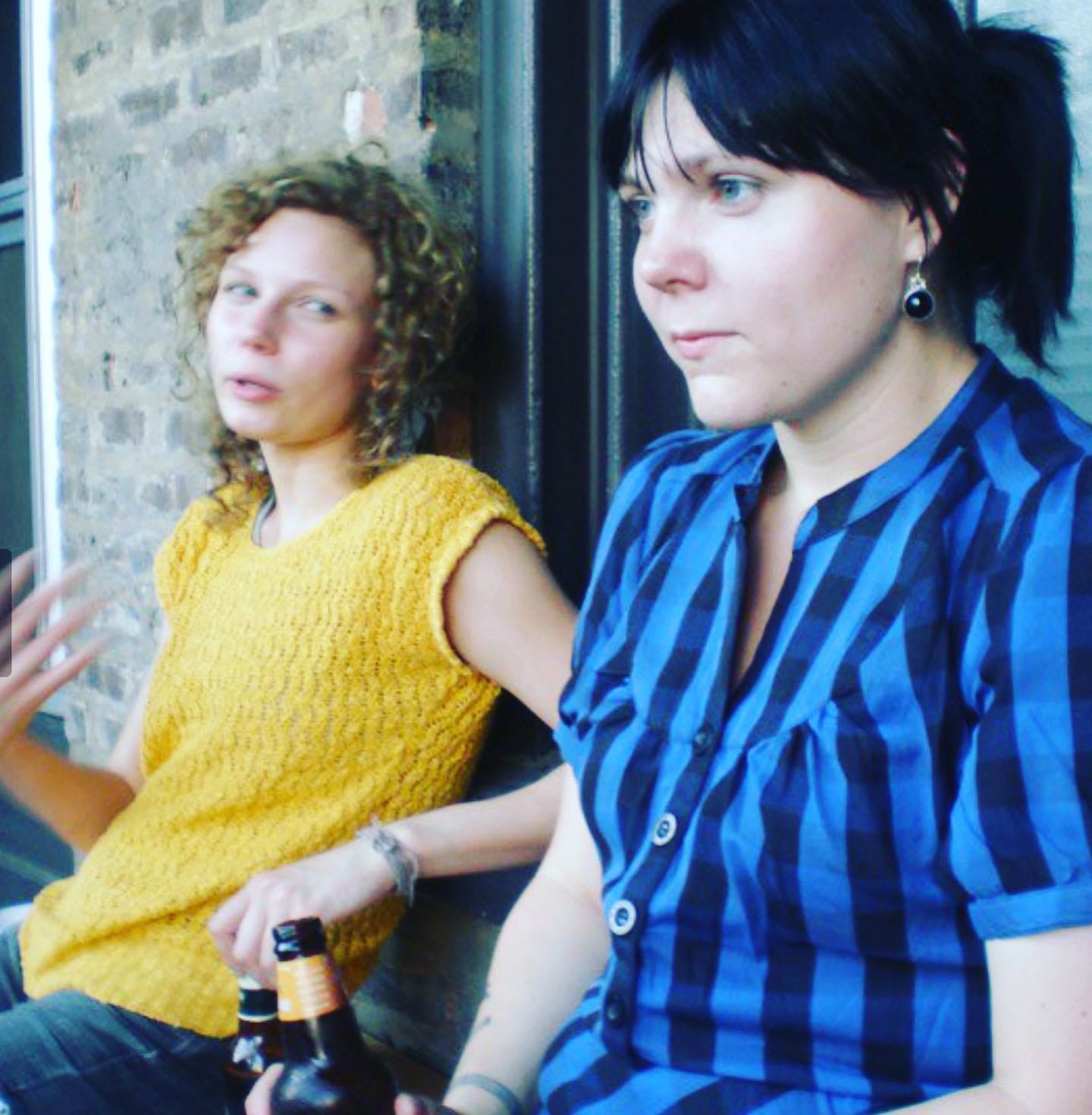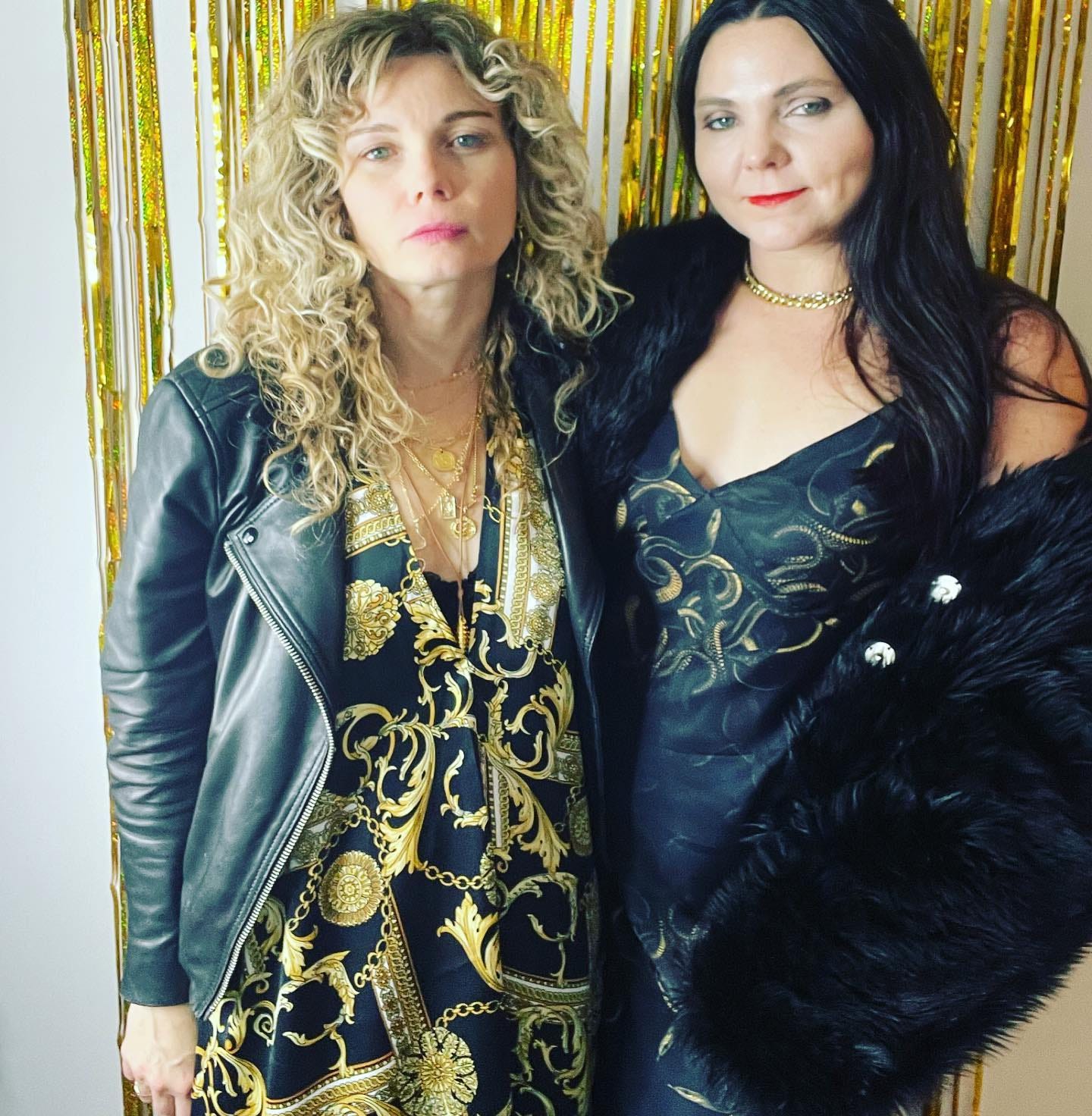Cool, Queer, Connected
On having empathy, doing the work and remembering where and who we come from.
I saw a tweet a few weeks ago that was a take on the “dream blunt rotation” meme but instead, it said, “nightmare blunt rotation: me at 13, me at 16, me at 18, me rn.”
As a *lit* femme, I found this idea so relatable that I practically groaned thinking about smoking out former versions of myself, something I’m sure my therapist would tell me has to do with my inner child needing a hug more than a vape, which, fair. But it’s also something I’ve had to reconcile with lately as I approach 40 and am met with the latest trending nostalgia of the Y2K/indie sleaze era from two decades ago when I turned 20 and realized I was gay.
Like a total cliche, I was in college when I really stepped into the multiple identities I’d had in me all my life — a feminist, a dyke, and a writer. My first girlfriend (and my editor at the school newspaper — cliche!) graciously helped expand my knowledge of contemporary queer culture — I had to catch up on the discography of Ani DiFranco (somehow!!!), indie movies like Better Than Chocolate that had somehow missed my Blockbuster, Valencia by Michelle Tea, already in paperback by that point. For better or for worse, I simultaneously felt compelled to share my findings — a baby dyke with an insatiable thirst for queer culture and community as soon as I felt privy to it, and not just by proximity.
Now, most writers would probably agree that their earliest work is painful to revisit, and while I find that to be true in many ways, I’m less prone to groan when I’ve written about something or someone outside of myself. It’s all the Livejournal posts, WordPress sites and blog posts left for dead tethered to bygone email accounts I can’t access anymore; the interviews I’ve given or opinions I’ve shared, clinging to the web in perpetual posterity, where something I felt true then has unquestionably shifted with time, context, and education.
I’ll give you an example.
In 2006, I ran an online magazine with my aforementioned first GF (hi, Jamie!) and bestie Emily. It was a Chicago-based lesbian magazine called CHILLmag.com — CHILL an acronym for “Chicago’s Hip Independent Lesbian Lifestyle” (GROAN!) as well as a portmanteau for “Chicago” and “Illinois.” We only published for a year, but outside of the content (interviews, reviews, columns, features and cartoons posted monthly as part of a singular issue), we also threw events. One was a Valentine’s Day party held at Betty’s Blue Star Lounge, where I booked bands and slid us on the schedule undetected. Looking for a little bit of publicity, we invited Liz Armstrong, a queer writer whose popular Anti-Social column for the Chicago Reader followed her exploits around the city. At the time, we didn’t know she was queer (score!) or expect that she would come — so when she popped by and asked me a couple of questions, I answered off-the-cuff in a way that I forever regret. This, dear reader, is an actual thing I said, in print:
“Lesbian magazines are so lame it’s ridiculous,” copublisher and managing editor Trish Bendix told me. “They’re all Melissa Etheridge and Rosie O’Donnell, stuff no one cares about.”
I cringe every time I think about how naive I was, how limited my scope of the feminist and lesbian print movements and lesbian culture in general — the dismissal of anything that was “before my time,” the inevitable distancing of myself from foremothers based on their perceived uncoolness. As if the hip new artists I was new to discovering weren’t at all affected by the career trajectories of Melissa Etheridge or Tracy Chapman or k.d. lang; untouched by the women’s music culture or transgressive renaissances of previous eras that built it so we could come. (Irony of all ironies, I have a very specific memory of starting to read Curve magazine after finding a copy with Le Tigre on the cover at Barnes and Noble. I just mentioned this memory to JD and Johanna in an interview, it’s so palpable.)
It can be really frustrating to revisit these ageist, uninformed ideas I had at 23. But when I try to employ a little empathy for that baby dyke version of me, who thought she knew what was HIP and COOL about being a lesbian as opposed to what was decidedly unchill, I can see how she came to that conclusion — that none of these people or art were connected because that history is and was rendered invisible. Even those women themselves were made to deny or forget their connection to a greater community in many aspects of their respective careers. It’s only been through my continued want to find those connections and to make them and to continue to try to share them with others that I’ve redeemed them and myself.
When I look back at any remnants issues of CHILL (thanks to the Wayback Machine), there are interviews with the Ditty Bops, Khaela Maricich of The Blow, Bitch, Jenny Hoyston of Erase Errata, Leslie and the Lys, Electrelane, Elizabeth Ziff of Betty, and even Kate McKinnon (who, at the time, was starring on Big Gay Sketch Show, produced by none other than Rosie O’Donnell). We ran reviews of Yo Majesty, Lady Sovereign, Peaches, Dynasty Handbag and had an eclecticism that expanded into local Chicago bands with lesbian members (like my personal favorite, Office). At 39, I can see so many blind spots and probably have even more, but what I try to recognize is that it’s all a part of the work — and that I’ve never stopped doing that work despite CHILL having only published for one year, a blip on the radar in a city like Chicago with an extremely rich history of print culture, largely influenced and documented by Tracy Baim, who last year stepped down as president and publisher of the Chicago Reader.
Part of this whole Lit Femme thing is that selfish pursuit to continue doing this work when I’m not getting paid (much) for it, and a hope that it proves helpful in any capacity — to have something on record, even if it’s only true at the time, or later changed by things unforeseen. (That’s kind of the nature of queerness, TBH — the past is consistently in conversation with an evolving present and future.)
I suppose this has come up for me in a lot of different ways — more than just the nightmare blunt rotation meme horrifying me into having to revisit a younger, less evolved version of me. A few years ago, I published one of the most intimate pieces I’ve shared to date — a personal essay about my friendship and falling out with the aforementioned Emily, who has the distinction of being the first femme friend I ever had. The emotionality of both writing and making something so fraught public was heightened by the fact that our friendship itself had been very online — not only was Emily involved with CHILL (and, as the one-woman kissing booth at the Valentine’s Day party, a central player in Liz Armstrong’s column), and we made a regular video blog called Gal Pals over a handful of years, even when living in different cities and with partners we’re now divorced from. I assumed (hoped?) not many people would read the thing — I’d been working on it privately, getting helpful edit suggestions from the wonderful memoirist/writing coach Chloe Caldwell — but felt that the few who found it might find something inside of it that could help them feel less alone in a particularly queer and under-discussed experience.
I’ve never had something resonate so with so many people that they felt the need to tell me so — that the details might be different, but that the mere discussion of how fraught queer female friendships can be, with different sets of dynamics and little direction from which to go on. And while some might assume writers are frequently alerted to how people feel about their work outside of a passive social media engagement, it’s genuinely surprising when someone wants to engage with what I write in a real way that makes me feel a little less lonely, too. Melissa Etheridge and Rosie O’Donnell are surely given their due regularly as heralded public figures. Still, I’d argue they deserve even more.
So much has changed since 2018, when that essay was published. It’s a part of the past now, stuck there but only in its singular form. Emily and I have had the fortune of reviving our long-term friendship, and the ability to create a new one from what previously existed, bringing our individual experiences in therapy and community back to the communal table with us. One thing we’ve always had in common was a want to share and be a part of an exchange with the greater community, despite the scarcity mindset that can plague such pursuits. She makes me proud to be a femme.
Emily and I just recently revived Gal Pals — for fun, for anyone who watched to feel connected, for us. What’s so incredible about knowing someone for 20-plus years is that they can reflect the past and present to you all at once, whether you like it or not.






♥︎♥︎♥︎